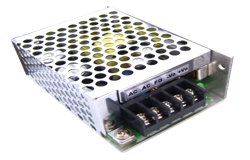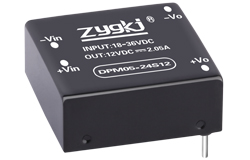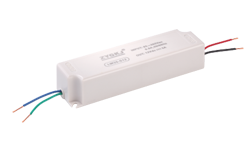Вести
Building a 120 Volt AC Power Supply for 3 Volts DC
Автор: ZYG Power Module Time: 2023-4-18
Introduction:
In this article, we will discuss how to build a 120-volt AC power supply for 3 volts DC. This process requires some basic knowledge of electronics and safety measures. We will provide step-by-step instructions to help guide you through the process.
Materials Required:
– Transformer (120V to 12V AC)
– Bridge rectifier
– Capacitor (1000uf, 16V)
– Voltage regulator (LM7803)
– Heat sink
– Wires
– Soldering iron and solder
– Wire stripper
– Pliers
– Safety glasses
Step 1: Safety Precautions
Before starting any electrical project, it is essential to take safety precautions to avoid electrical shocks or fires. Wear safety glasses to protect your eyes from soldering fumes. Ensure that the circuit is unplugged from the power source when assembling or testing.
Step 2: Assembling the Circuit
The first step in building a 120-volt AC power supply for 3 volts DC is assembling the circuit. This process involves connecting the transformer, bridge rectifier, capacitor, voltage regulator, and heat sink. Follow the wiring diagram to connect the components correctly.
Step 3: Wiring the Transformer
The transformer is the first component to connect. It converts 120 volts AC to 12 volts AC, which is then rectified to DC. Cut the wires of the transformer to the required length using a wire cutter. Strip the ends of the wires using a wire stripper to expose the copper strands. Connect the wires to the terminals of the transformer according to the wiring diagram.
Step 4: Wiring the Bridge Rectifier
The bridge rectifier is used to convert AC to DC. Connect the bridge rectifier to the transformer using the wires provided. Ensure that the polarity is correct by following the wiring diagram.
Step 5: Wiring the Capacitor
The capacitor is used to smooth out the DC voltage, reducing any ripples or fluctuations. Connect the capacitor to the bridge rectifier using the wires provided. Ensure that the polarity is correct by following the wiring diagram.
Step 6: Wiring the Voltage Regulator
The voltage regulator is used to regulate the voltage to 3 volts DC. Connect the voltage regulator to the capacitor using the wires provided. Ensure that the polarity is correct by following the wiring diagram.

Step 7: Installing the Heat Sink
The voltage regulator generates heat during operation. Installing a heat sink helps to dissipate the heat away from the regulator, preventing damage. Attach the heat sink to the voltage regulator using screws or thermal glue.
Step 8: Testing the Circuit
Before powering the circuit, it\’s essential to check for any wiring errors or shorts. Use a multimeter to test the circuit\’s continuity and resistance. Once you\’re satisfied, plug in the circuit to a 120-volt AC power source and check the output voltage using a multimeter. The output voltage should be 3 volts DC.
Conclusion:
Building a 120-volt AC power supply for 3 volts DC requires some basic electronics knowledge and safety measures. Follow the wiring diagram and steps provided to assemble the circuit correctly. Test the circuit for any errors or shorts before plugging it into a power source. Once you satisfied, you should have a functioning power supply that produces 3 volts DC.
релевантни информации
-
2023-10-13
Understanding the Concept of Modular Power Supply
In the world of computer hardware, one important component that often goes unnoticed is the power supply. It is responsible for delivering the necessary electrical power to all the other components in a computer system. Over the years, power supplies have evolved significantly, and one particular innovation that has gained popularity among computer enthusiasts and professionals is the modular power supply. A modular power supply is designed to provide flexibility and convenience to users. Unlike traditional power supplies, which have a fixed set of cables, a modular power supply allows users to connect only the cables they need. This means that unnecessary cables can be left unconnected, resulting in a cleaner and more organized system. Additionally, modular power supplies often...
Погледнете детали -
2023-6-14
Car AC-DC Converter: Power Your Devices on the Go!
In today's modern world, our reliance on electronic devices has increased significantly. Whether it is a smartphone, tablet, or laptop, we need to stay connected to these devices at all times. This becomes especially important when we are on the go, traveling in a car. However, in a vehicle, the power supply for these devices is limited. Fortunately, with the help of a car AC-DC converter, we can power our devices on the go. A car AC-DC converter is a device that helps to convert the DC power supply of a car into AC power, which can be used to charge our electronic devices. The converter plugs into the cigarette lighter or the power outlet of a car and provides...
Погледнете детали -
2023-12-6
AC Power Supply Module: Ensuring Efficient and Reliable Energy Delivery
In today's fast-paced world, the demand for efficient and reliable energy delivery has become paramount. The AC power supply module plays a vital role in meeting this demand by converting alternating current (AC) into usable direct current (DC) for various electronic devices. This article aims to explore the importance of AC power supply modules, their components, and their role in ensuring efficient and reliable energy delivery. Components of an AC Power Supply Module An AC power supply module comprises several key components that work together to convert AC to DC power. These components include a transformer, rectifier, filter capacitor, and voltage regulator. The transformer is responsible for stepping down the high voltage AC power to a lower voltage level suitable...
Погледнете детали -
2023-6-13
Efficient AC DC Power Supply with PFC Technology
Power supply technology has come a long way since the early days of electronics. One of the biggest advancements in power supply technology has been the development of Power Factor Correction (PFC) technology. PFC technology has revolutionized the way that power is delivered to electronic devices, making power supplies more efficient, reliable, and cost-effective. In this article, we will discuss how PFC technology works and how it has improved the efficiency of AC DC power supplies. What is PFC Technology? Power Factor Correction technology is a method of correcting the power factor in an AC circuit. The power factor is a ratio of the real power (watts) to the apparent power (volt-amperes) of a circuit, and it indicates how efficient...
Погледнете детали -
2023-8-8
China Efficient AC to DC Converter: Illuminating LEDs with 12V Power Supply
Introduction In the world of electronics, converting alternating current (AC) to direct current (DC) is a crucial step in powering various electronic devices. One popular application of AC to DC conversion is in illuminating light-emitting diodes (LEDs). LEDs have gained immense popularity due to their energy efficiency and durability. In this article, we will explore the concept of an efficient AC to DC converter and its role in powering LEDs using a 12V power supply. Understanding AC to DC Conversion Before diving into the details of an efficient converter, it is essential to understand the basics of AC to DC conversion. Alternating current is the flow of electric charge that periodically changes direction, such as the power supplied by the...
Погледнете детали -
2023-7-19
Is the Bidirectional Converter effectively bridging the gap between languages?
Introduction Language is a remarkable tool that enables communication and understanding among individuals. However, language barriers often hinder effective communication, both in personal and professional settings. The bidirectional converter aims to overcome these obstacles by providing a seamless transition between languages. This article explores the significance of bidirectional converters and their potential to bridge the gap between languages. Understanding Bidirectional Conversion Bidirectional conversion refers to the process of translating text or speech between two languages, while maintaining the integrity and context of the original message. Unlike traditional translation methods that focus on one-way conversion, bidirectional converters allow for a dynamic exchange of languages. These sophisticated systems employ cutting-edge technologies, such as natural language processing and machine learning algorithms, to ensure...
Погледнете детали


















